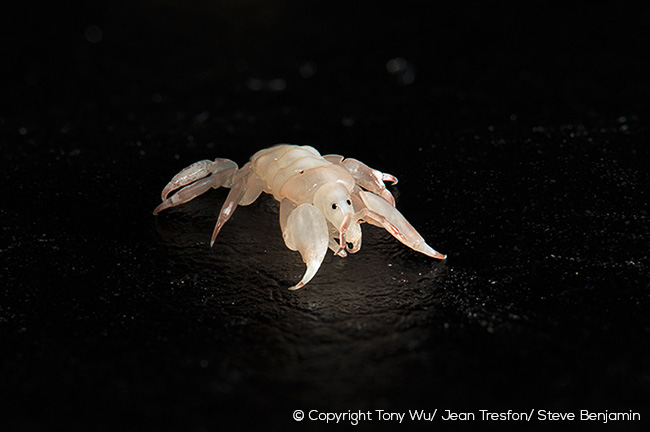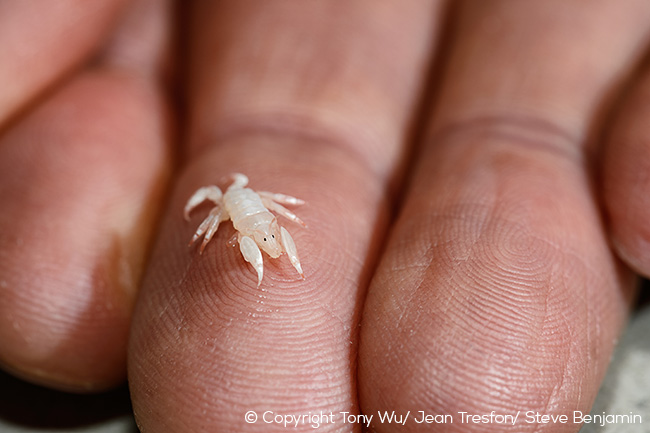I wrote a bit about Cyamus scammoni, a.k.a. whale lice on gray whales, a week ago during an airport layover.
I have a boat layover today. The winds are up, swells big, and seas chaotic.
So I thought I’d write about another species of related parasite, because…well, whale lice just don’t get the love and respect they deserve!
Meet Cyamus ovalis:

This species is one of three that is known to live on right whales (Eubalaena sp). They congregrate all over rights, but particularly on the whales’ callosities (a.k.a., big bumpy parts) on their heads.
In fact, populations of these parasites are so thick that they make the callosities visible and distinct.
“So what?” you might ask.
Well first, there are so many that it’s kinda’ gross when you see them up close (think “gross” in the same enthralled manner a five-year old kid says: “oooooooo grooooooooosssssss” when confronted with a slithering mass of earthworms).
And second, patterns of callosities are just different enough that they can be used to ID individual whales. These parasites, being lightly coloured, make it easy to discern callosity shapes, sizes and arrangements from a distance, and certainly in photos and video.
If you click and take a look at the photo I posted of Cyamus scammoni, you’ll see that both species share a similar body plan. Not surprising, really.
Cyamus ovalis above is smaller and less hefty than the gray whale parasite in the photo I posted last week, but that’s just by chance.
Cyamus ovalis can get pretty chunky and sumo-esque too.
Below is the same whale louse on my hand for scale...probably the only hand-modeling gig I’ll ever get.

Photographic note: Taking these photos was a joint effort involving Jean’s D4, 105mm macro lens and a Nikon flash (SB–800 I think?); my creation of a makeshift studio using kitchen counter, multiple towels, a paper towel roll, and a plastic cutting board; Steve’s eyes and steady hands for actual taking of photos. Steve was the youngest among us, so we were forced to trust his eyes for manual-focusing. Jean and I supervised like the wise elders that we are.
Note: Photographed with the permission of the Department of Environmental Affairs, South Africa.